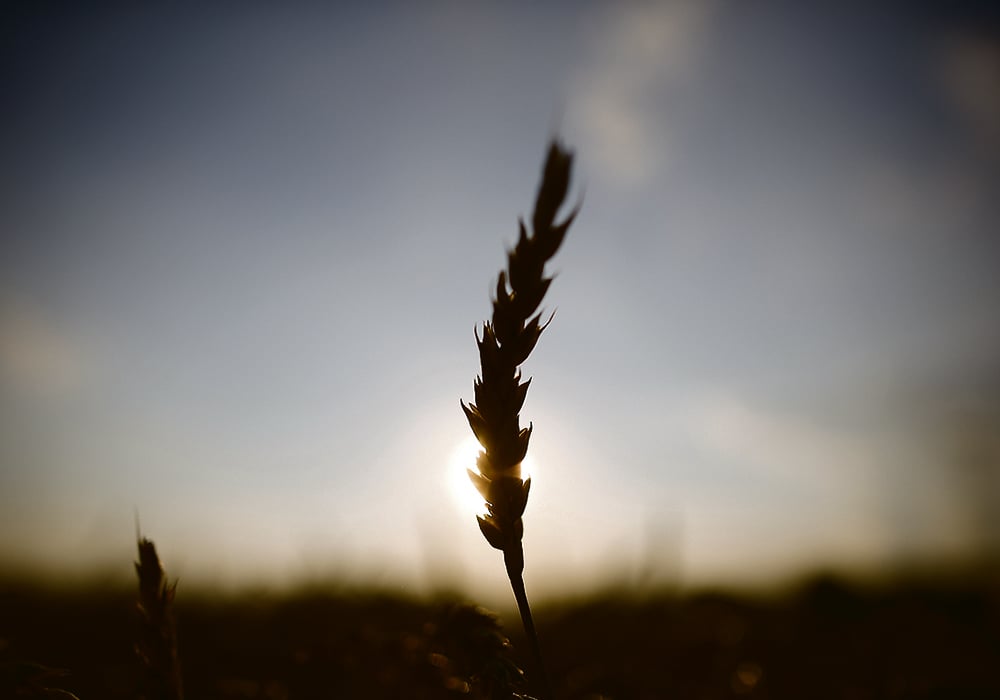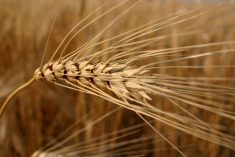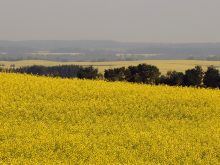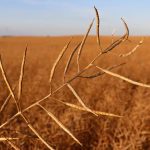Global food security concerns are top of mind because of the heart-breaking war in Ukraine so it is welcome news that some crops already in the ground are enjoying improved conditions.
Brazil’s giant second corn crop is seeded and progressing with adequate moisture and parts of America’s hard red winter wheat region got some much-needed moisture.
But in China’s winter wheat area, satellite imaging is confirming that there is reason for concern, although the season is still early and there is time for crops to improve if the weather co-operates.
These three crops will be harvested in June and July and are important percentages of total global production.
Brazil’s farmers have almost all the 39.5 million acres of second crop corn in the ground now, well within the ideal planting window. The area, as estimated by Brazil’s national forecaster Conab, is up 6.7 percent from last year and would represent about 75 percent of the country’s total corn production.
Last year, drought and frost hammered the second crop down to about 61 million tonnes from more than 75 million tonnes the year before.
That reduction, coupled with voracious corn import demand from China, helped lift Chicago corn futures to a then-record near US$7.75 per bushel in May from about $4.80 per bu. at the start of January.
The drought carried through to this year’s soybean and first corn crops, slashing their yield.
The first corn crop, which is mostly harvested now, came in at an estimated 24.7 million tonnes, down 4.6 million from the forecast made at planting time.
I should also note Argentina’s corn crop suffered from drought, and the grain exchanges in the country estimate it at only 48 to 49 million tonnes, down from hopes for 52 million at seeding time.
The drought was most severe in southern Brazil, but northern growing zones, including the state of Mato Grosso, had good moisture.
A larger percentage of the second corn crop is planted in northern growing areas, which as noted had better moisture and in recent weeks southern regions got a good dose of desperately needed rain.
Conab and the U. S. Department of Agriculture both forecast the second crop at a little more than 86 million tonnes, which would be a new record high.
Harvest begins in early June and the crop will need regular rain to preserve yields. Rain throughout Brazil was expected the last week of March and the first week of April, but the La Nina persists in the Pacific and it tends to bring dry weather to southern Brazil so that remains a concern.
Turning to the U.S., a huge weather system last week brought lots of moisture up from the Gulf of Mexico through the Midwest to the Great Lakes.
Some the rain got to the eastern part of the hard red winter wheat region.
Eastern Kansas and Oklahoma got 35 to 75 millimetres from the system. Central Kansas and Oklahoma and southeastern Nebraska got amounts closer to 20 to 30 mm but drought stricken western parts of these states got only light showers.
Wheat production is concentrated in the western parts of the area.
Another system at the end of March was expected to deliver more rain to the eastern parts of these states but only small amounts to the western parts.
To summarize, these spring storms are providing good seeding moisture to the Midwest but are of only modest value to hard winter wheat where drought’s grip remains tight.
Turning to China, officials there generated headlines recently when they said the winter wheat crop was in the worst condition in history due to late seeding caused by torrential rain and flooding in late summer last year.
Satellite monitoring that includes infrared scanning to generate normalized difference vegetation index readings provides more information on the situation. You can see vegetation index information by selecting the China tab at the USDA’s crop explorer page, which can be found at ipad.fas.usda.gov/cropexplorer/Default.aspx.
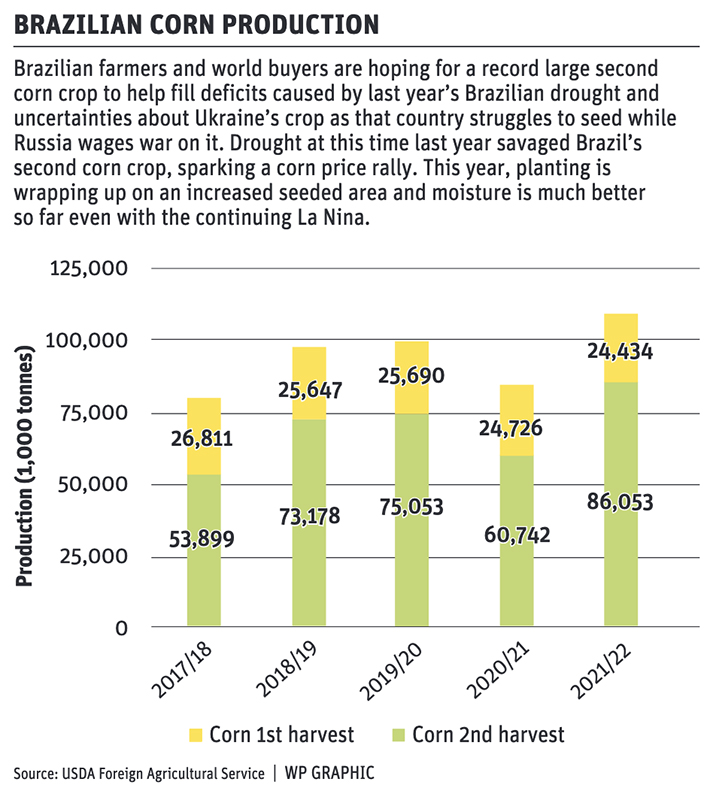
Drilling down into the maps in this section shows that Henan province, which produces 23 percent of China’s wheat, saw a sharp decline in NDVI in the week ending March 21, down to the bottom of its normal range.
The province immediately southeast, Anhui, home to 11 percent of China’s wheat production, also had below normal NDVI.
Generally, across China it has been the warmest March in 30 years and in mid-month temperatures were 11 C above normal, causing rapid development of winter crops. That caused moisture stress in some areas.
However, NDVI levels were close to normal in Shandong, 20 percent of wheat crop, Hebei with nine percent and Jiangsu, also with nine percent.
In Europe, winter crops are going into spring in mostly good condition but Spain is dry and Morocco in North Africa is exceptionally dry.

